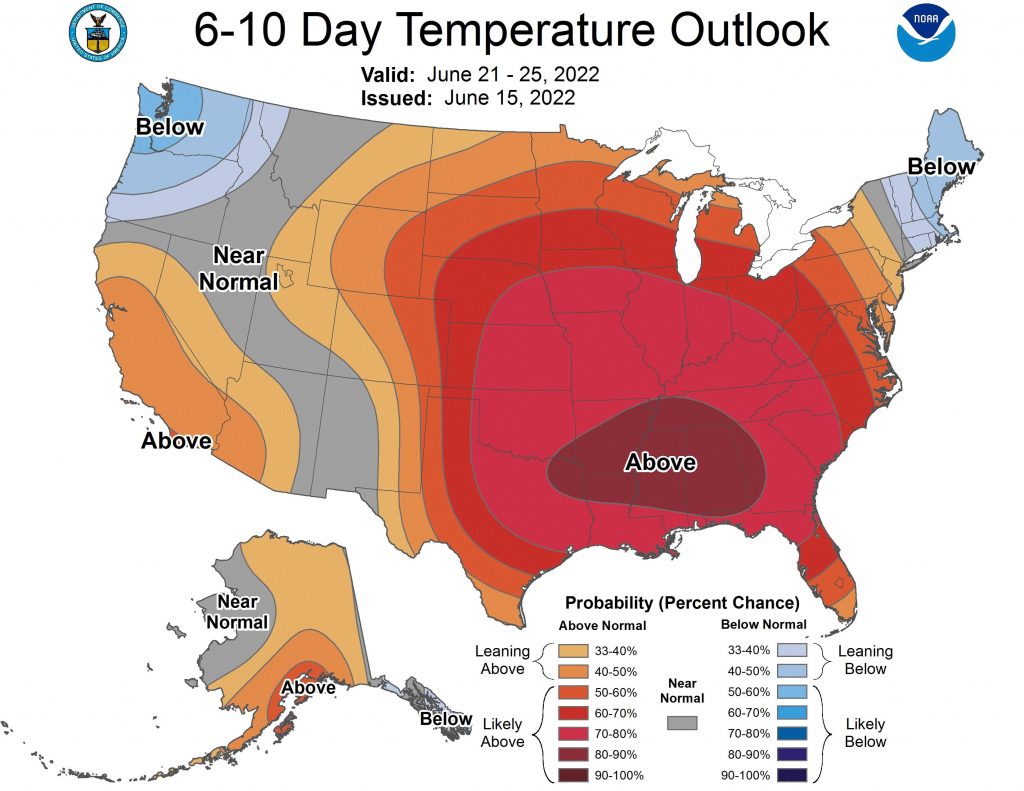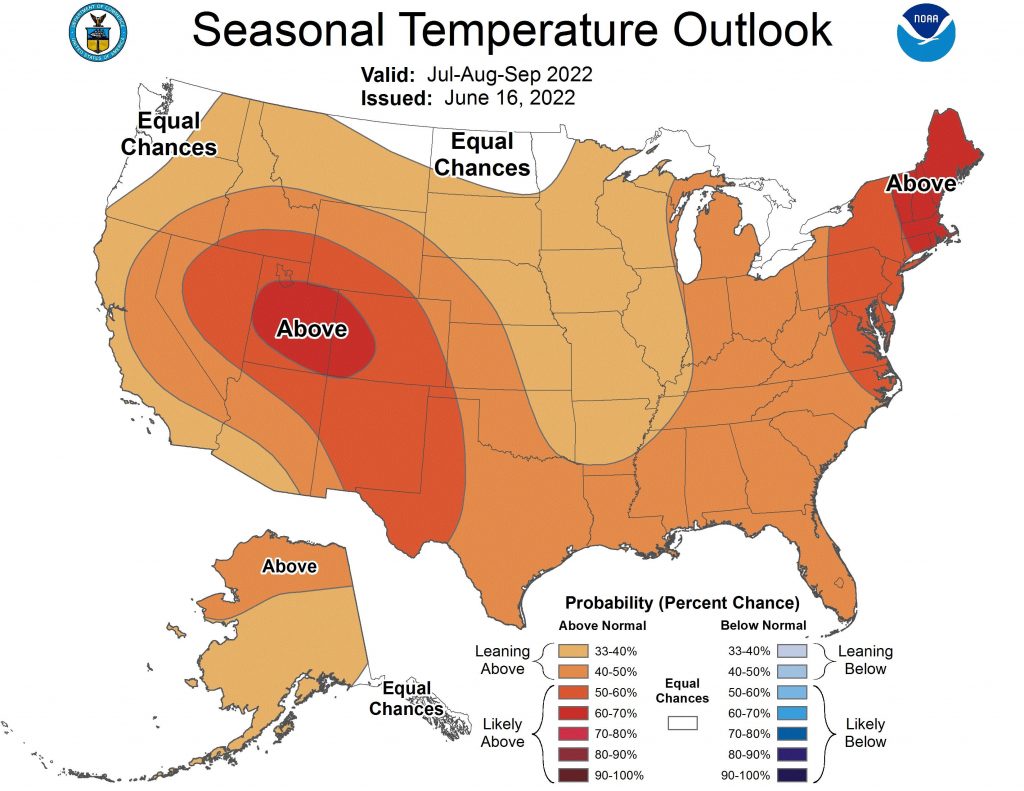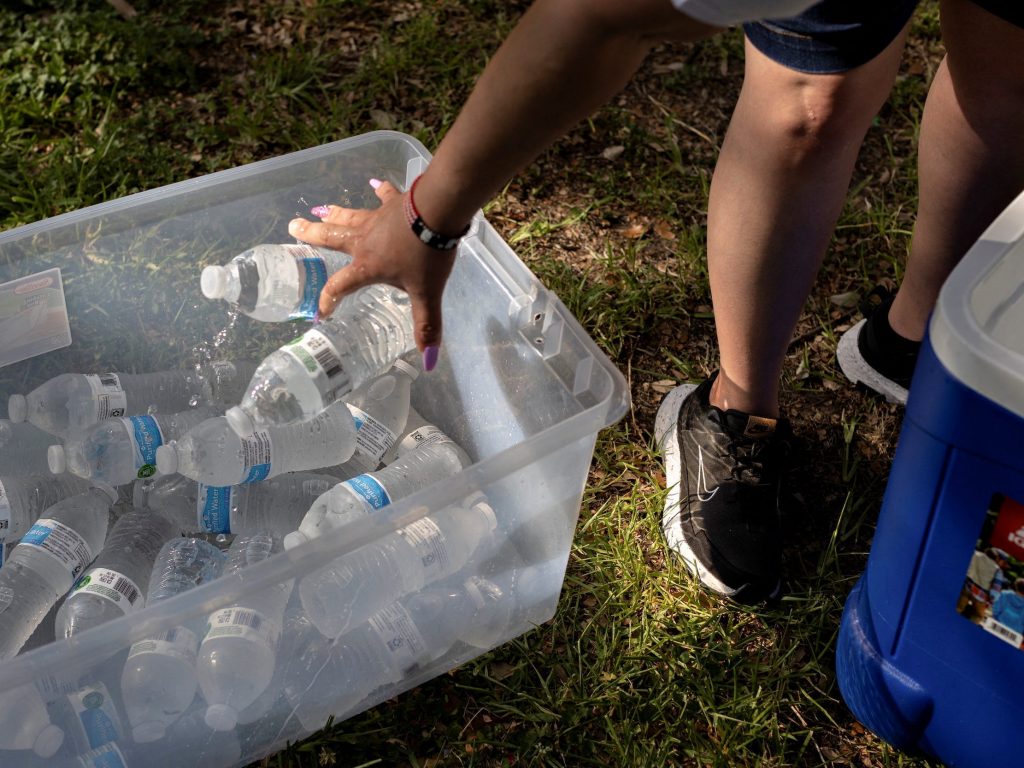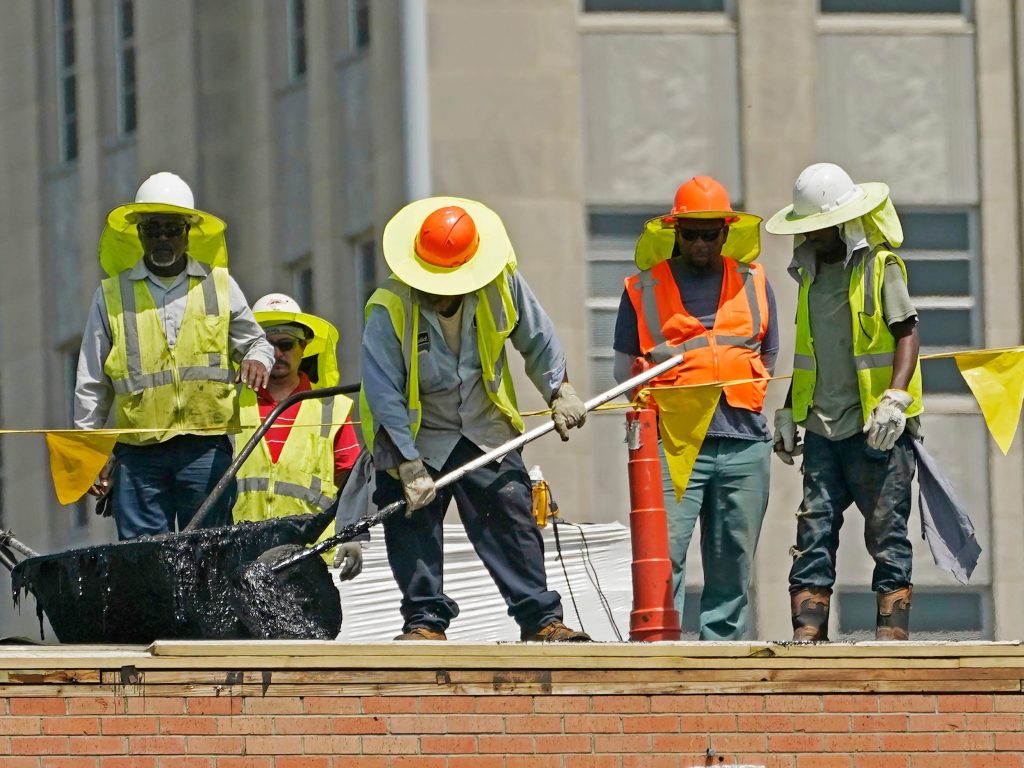- A heat dome settled over the Central and Eastern US this week, potentially causing three deaths.
- The heat closed schools and killed roughly 2,000 cattle. It's expected to continue next week.
- Forecasters expect this summer to feature above-average temperatures for nearly the entire US.
It's been a hot week for millions of people across the US, and it's not over yet.
A heat wave has shattered daily temperature records across the Southwest, Central Plains, and Midwest this week. More than 100 million people in the US have been under some type of heat alert and advised to stay indoors.
Two people died in the Milwaukee area amid the extreme temperatures — a 39-year-old woman found in her home and an 89-year-old man who collapsed in his yard. The medical examiner's office said they were "probable" heat deaths, according to NBC News. Another man, 67, was found dead in California's Death Valley National Park, after he ran out of gas and walked through the heat.
Tens of thousands of people faced power outages. School districts in Michigan cancelled classes, and public schools in Pittsburgh, Pennsylvania, switched to half days to avoid the hottest hours, ABC News reported. In Odessa, Texas, a main water line broke, leaving residents to weather the heat without running water for more than 48 hours, The Texas Tribune reported.

In Kansas, an estimated 2,000 cattle died from heat stress as of Tuesday, according to Reuters.
"It's really a combination of the heat and the humidity which causes some of these impacts," Marc Chenard, a meteorologist with the National Weather Service, told Insider. "It really depends on how used to that type of weather these areas are, and also the time of year. So for some parts of the country, it might be a little bit early for some of this heat and humidity."
Humidity can make extreme temperatures feel even hotter, since it hinders the cooling process of sweat evaporating off people's skin. That's why humidity can push the heat index 10-15 degrees higher than the actual temperature.

Milwaukee's heat index hit a record June high of 109 degrees Fahrenheit on Tuesday. Las Vegas, too, reported 109 degrees. North Platte, Nebraska, snagged its own June record of 108 degrees. Phoenix, Arizona, rose even further to 114 degrees. Death Valley topped them all at 123 degrees.
The heat will likely continue into next week for many parts of the US, according to forecasts from the Climate Prediction Center, which is operated by NWS and the National Oceanic and Atmospheric Administration. The below map shows the center's projections.

"The prolonged nature of the well-above-normal temperatures and excessive heat has been impressive for early to mid June," Chenard said.
The Climate Prediction Center also produces a three-month outlook for temperatures nationwide. That forecast projects a summer of above-average heat across the entire US, with the exception of two small pockets in the north.

"I don't think we're going to have record temperatures continue every day or every week through the summer. But I think what this suggests is that the conditions will be favorable to see at least rounds of well-above-normal temperatures at times through the summer," Chenard said.
Heat waves are growing more common, severe, and lengthy as global temperatures rise. The 2018 National Climate Assessment found that the frequency of heat waves has tripled since the 1960s, and that the average heat-wave season has increased by 45 days.
A 'heat dome' with tornadoes and thunderstorms around the edges

This month's extreme temperatures came from a "heat dome" — a ridge of high pressure in the upper and middle layers of the atmosphere, trapping heat beneath it. The dome started in the Southwest and then parked itself over the Central and Eastern US.
"In this case, it's just persisted a long time," Chenard said, adding, "We just have this bubble of heat that's been over the central part of the country."
In Chicago, the heat wave arrived alongside hurricane-force winds and a rare instance of a circulation system threatening to become a tornado over the city. Two large tornadoes ripped through central Wisconsin this week, according to the La Crosse Tribune.
It's not clear whether the twisters were directly related to the heat wave, but Chenard said that storms typically brew around the fringes of heat domes, where they interact with other weather systems.
"It is common on the edges of these domes to get rounds of thunderstorms of varying intensity. They don't always have tornadoes," he said.

